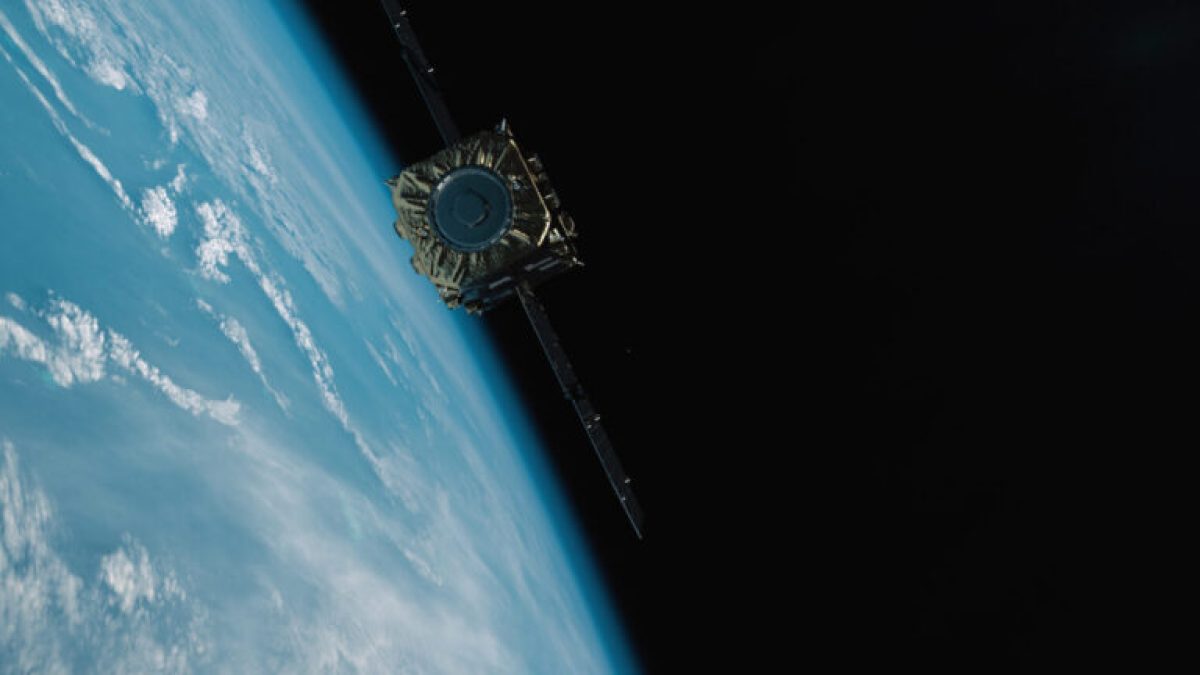The Adras Gay spacecraft seeks to remove space debris and direct it into the atmosphere to burn up and disintegrate (Astroscale)
The Japanese company "Astroscale" intends to be the first to initiate the process of removing space waste and the remains of debris floating around the Earth in a near orbit.
Over the course of 70 years of human activity in outer space on the borders of the Earth's atmosphere, humans have sent tons of satellites that ascended into space and did not return.
At that time, the international community did not care about what would happen later, and as a result, a lot of space waste and debris resulting from the collision of out-of-service satellites accumulated and turned into small pieces and parts traveling at high speeds in space, which threatens safe spaces and areas for human activity in space. .
Accordingly, the Astroscale company took it upon itself to begin the process of removing the debris and restoring space to its previous state. The spacecraft that was launched last February 18 from New Zealand, and officially began on February 22 the mission of reaching large pieces of debris that had lost communication with Earth and would not be launched. Any sign.
The primary goal of this mission is to monitor the body of the abandoned Japanese H2A rocket, which is floating close to the Earth in low orbit, and which does not contain any visual aids that would allow it to be discovered, nor does it contain any docking points with spacecraft.
The scrap missile is about 11 meters long and 4 meters in diameter, and weighs about 3 tons, and nothing else is known about it.
Some suggest that it is possible that the missile was hit by other space junk and was damaged, and thus it is no longer possible to control or move it.
Astroscale commented in a press release: The rendezvous and approach operations are really important for future space reclamation, and it is about making sure that the spacecraft performing the repair can safely approach space debris and destroyed pieces.
This first step will demonstrate the possibility of finding lost pieces of space junk, getting close to them, and characterizing them to capture all the details.
The company indicates that if this mission succeeds, it is possible to meet any object in near Earth orbit.
Either it is space debris and it attaches to the spacecraft entrusted with the mission and pushes the debris on a controlled path through the atmosphere to burn up, or the spacecraft can be used for the purpose of moving satellites in orbit and changing their directions if necessary.
By the end of 2022, the American Space Surveillance Network announced the presence of 25,857 artificial objects in low Earth orbit, of which only 5,465 satellites are still in service (NASA).
Space debris... a man-made space scourge
This space debris threatens the safe spaces and areas that allow humanity to move to and from space. This problem was expressed by the American NASA space station scientist Donald J. Kessler in 1978, after he noticed a rapid increase in space activity in low Earth orbit, which prompted him He developed his theory, which he called “Kessler Syndrome,” addressing the damage caused by unchecked human activity.
Kessler laid out a scenario for the future, in which he assumed a doubling of the number of satellites, noting that at some point the orbit would be crowded with objects, causing a series of events that would prevent humans from leaving Earth.
He assumed that there is a critical point at which objects and satellites begin to collide together, and every collision that occurs in outer space will result in more objects floating in space, and thus more collisions will occur, then more objects, and thus a chain of events is formed that will not stop, so leaving the Earth becomes It is impossible to achieve without exposing yourself to risks.
Source: websites

